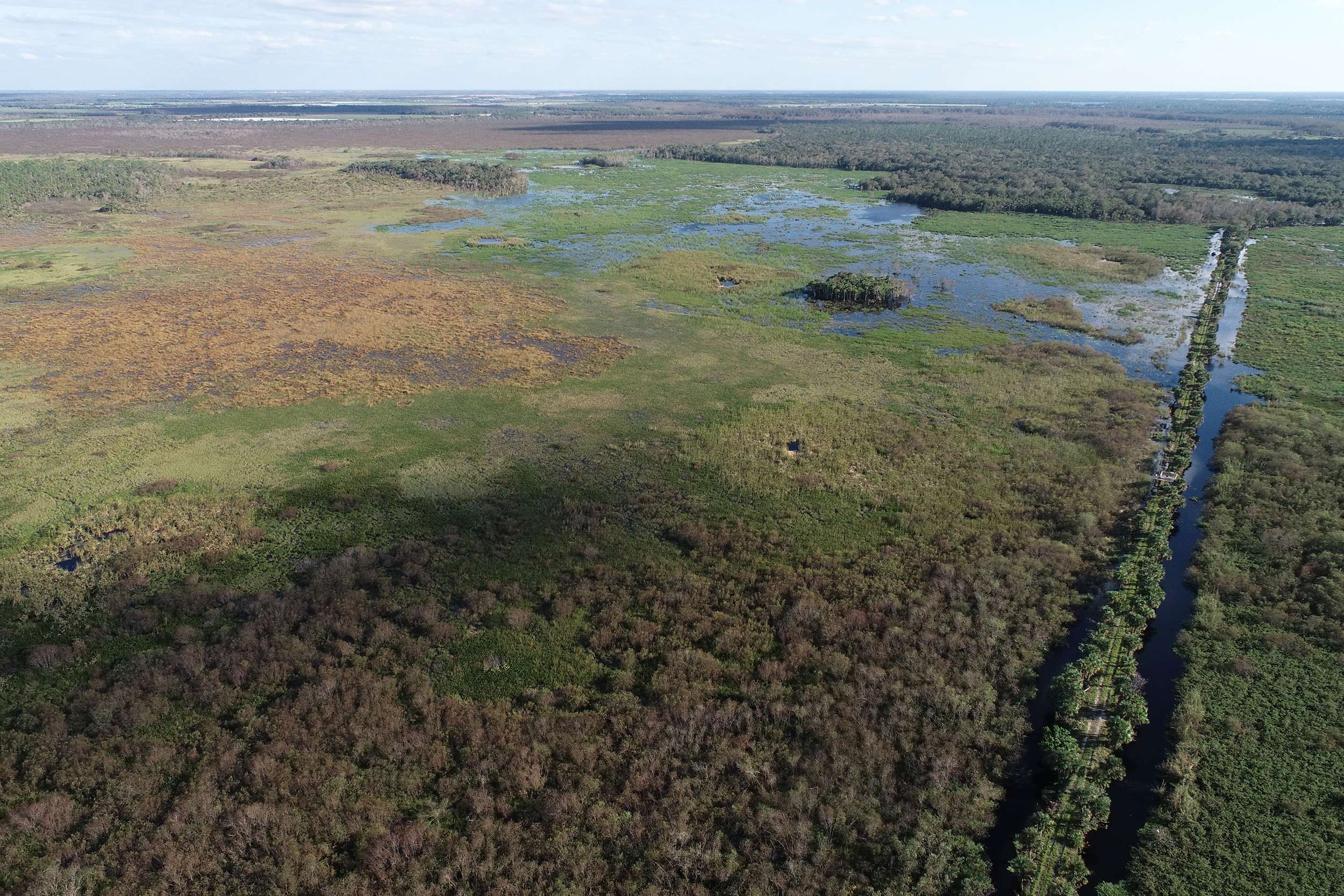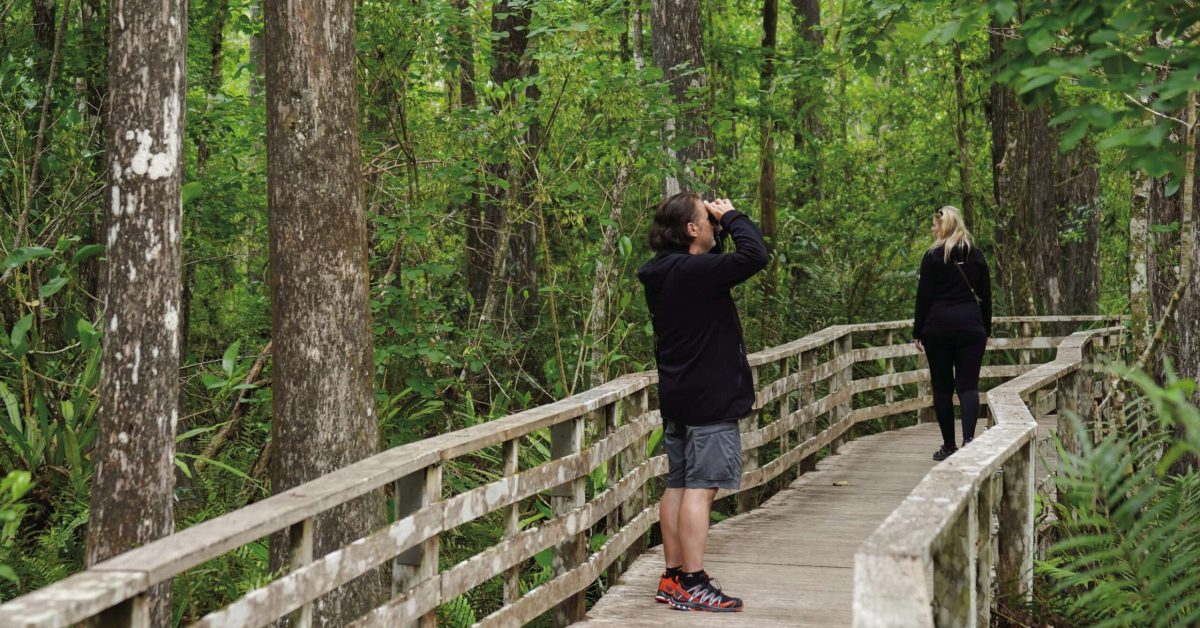This is not a celebration with a rock band, a Champagne fountain and enough fireworks to power a rocket to the moon. Don’t look for a fete with floor-length dresses, filet mignon dinner and valet parking.
Those all have their place. But the 70th birthday of Audubon Corkscrew Swamp Sanctuary is being celebrated by simply reveling in its unique natural beauty and expanding a commitment to protect it.
There’s an exhibition of photographs taken by three prize-winning artists-in-residence moving among art spaces around the region to show life inside its nearly 700-year-old bald cypress forest. The sanctuary was founded in 1954 to protect that old-growth forest, the largest remaining on Earth, from a fate as patio decks and outdoor furniture.
A research complex is also in its birthday plans: Conservation Commons, focused on understanding and protecting that forest, as well as its wildlife and plant life. There’s a $12.2 million capital campaign for it and an overhaul of the Discovery Center-lobby sections of its Blair Visitor Center.
The final installation will be an outdoor classroom to allow students to do direct work with nature.
 Upgrading 20-year-old technology
Upgrading 20-year-old technology
What the public will see first are the lobby and the Discovery Center. The latter is getting much-needed new technology—its current system is more than 20 years old—to take visitors straight into the forest.
“[There will be] more opportunities for people to see what they’re going to see on the boardwalk, to get excited. And when they come back from the boardwalk, they may want to learn a little bit more about the ecology,” said Director Keith Laakkonen. There’s a direct entrance to the boardwalk that will send visitors on their way to a nature-watching adventure.
The center will be more versatile, as well, with movable exhibition walls that will allow gatherings, conferences and celebrations in it.
What the public may not see so much of is the Conservation Commons, a building with research space for both staff and visiting researchers. Researchers already come in from all over the world, Laakkonen said, “because this is the largest remaining strand of old-growth cypress in the world; it’s a really neat place to do some scientific discovery and research.
“There’s a lot of species here we’re still finding out about. There are some orchid species, some epiphytes that are not found in many places in the diversity and volume that they are here.”
The current sanctuary “laboratory” is a folding table. Any money that has come to Corkscrew has been returned to maintaining the sanctuary, he said. Fish sampling, sediment cores, vegetation work are all functions that have to be sent elsewhere now.
Exploratory facilities will help the staff understand more fully what the sanctuary needs and what it does for the environment in the microclimates it nurtures.
“Simple things such as laboratory space, office space, space to work on vehicles —a whole host of other things”—will be new to Corkscrew Swamp Sanctuary, Laakkonen said. “It really opens up what you can do.”
‘Walk the walk’ with green buildings
The four to six buildings are a complex proposition, he added. Resilience is a key component, as Corkscrew is not immune to hurricanes. Not long after its boardwalk was finished, Hurricane Donna turned its wrath on the sanctuary in 1960 and totally destroyed parts of the boardwalk.
Corkscrew’s administration also wants the buildings to be LEED-certified, meeting the standards of ecology-minded construction. Photovoltaic cells that can provide renewable energy are also in the plans.
Corkscrew, Laakkonen emphasized, wants to “walk the walk” in conservation and renewable energy.
The organization is still involved in its capital campaign to fund those; it has raised an estimated $7.5 million of the $12.2 million goal. Architectural renderings are planned for late spring, but the process of working with all the agencies involved may make the final buildout a 3- to 4-year project.
The updated Discovery Center and lobby are planned to be complete by December, however. That is the month in which the papers were signed for what today is a 13,000-acre sanctuary, with, Laakkonen said, a 50,000 watershed preserve around it, operated by Corkscrew Regional Ecosystem Watershed. Both are major habitats for the endangered Florida panther, the “ghost” orchid, wood storks and swallow- tailed kites.
And Laakkonen revealed there is some celebrating planned: “We’re going to have a party in December.”
This story was published in The Naples Press on April 5.





